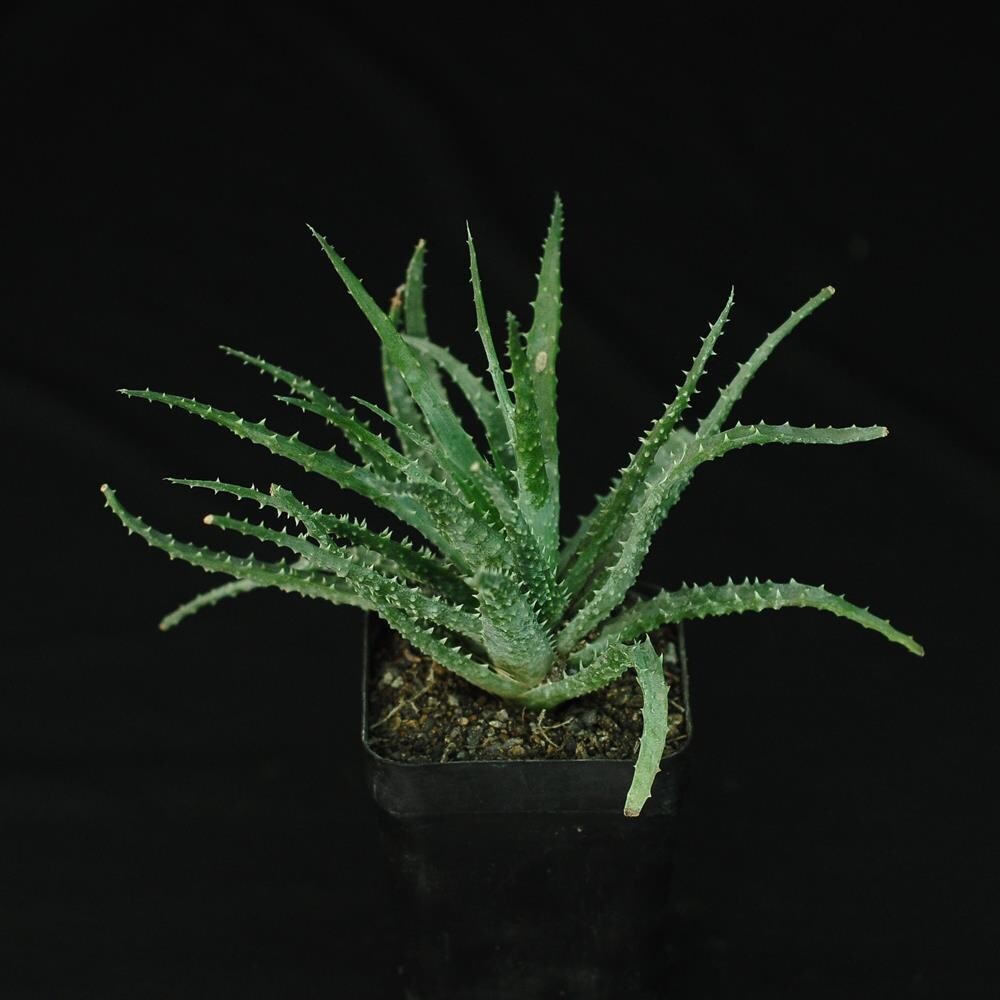Please check the Shipping Updates Page for information on shipping.
Aloe humilis
Our clone is long leaf and much spiny cultivar.
Origin of Name
Aloe humilis, commonly known as the "Spider Aloe," derives its name from the Latin word "humilis," meaning low or small, reflecting its compact, low-growing nature. This name highlights the plant's modest stature compared to some of its larger Aloe relatives, yet it possesses a distinctive charm and appeal in its form and flowering habit.
Technical Description of Plant
Aloe humilis is a small, rosette-forming succulent known for its dense, spiky leaves that are green to bluish-green with white spots and soft, toothed margins. The leaves may exhibit a slight curve or twist, adding to its visual interest. Mature plants can reach up to 6 inches in height and spread to form clumps with offsets. It produces vibrant orange to red flowers on tall spikes, usually in late winter to early spring, adding a burst of color to the succulent garden.
Origin of Plant
Native to South Africa,it is endemic to South Africa's Cape Province, Aloe humilis thrives in rocky areas and semi-desert conditions, where it has adapted to survive with minimal water and high levels of sunlight. Its ability to store water in its leaves allows it to withstand periods of drought, characteristic of its arid homeland.
Conservation Status
Aloe humilis is not currently listed as an endangered species. However, like many aloes, it faces threats from habitat loss and illegal collection in the wild. Sustainable cultivation in gardens and nurseries helps to mitigate these threats by reducing the demand for wild-harvested plants.
Care Instructions
Aloe humilis prefers bright, indirect light but can tolerate direct sunlight, making it suitable for outdoor gardens in warm climates or as a potted indoor plant near sunny windows. It requires well-draining soil and moderate to sparse watering, allowing the soil to dry out completely between waterings to prevent root rot. During the winter months, reduce watering further to mimic its natural dormant period. Protect from frost to prevent damage to the leaves. Fertilize sparingly with a succulent-specific fertilizer during the growing season to support growth and flowering.
